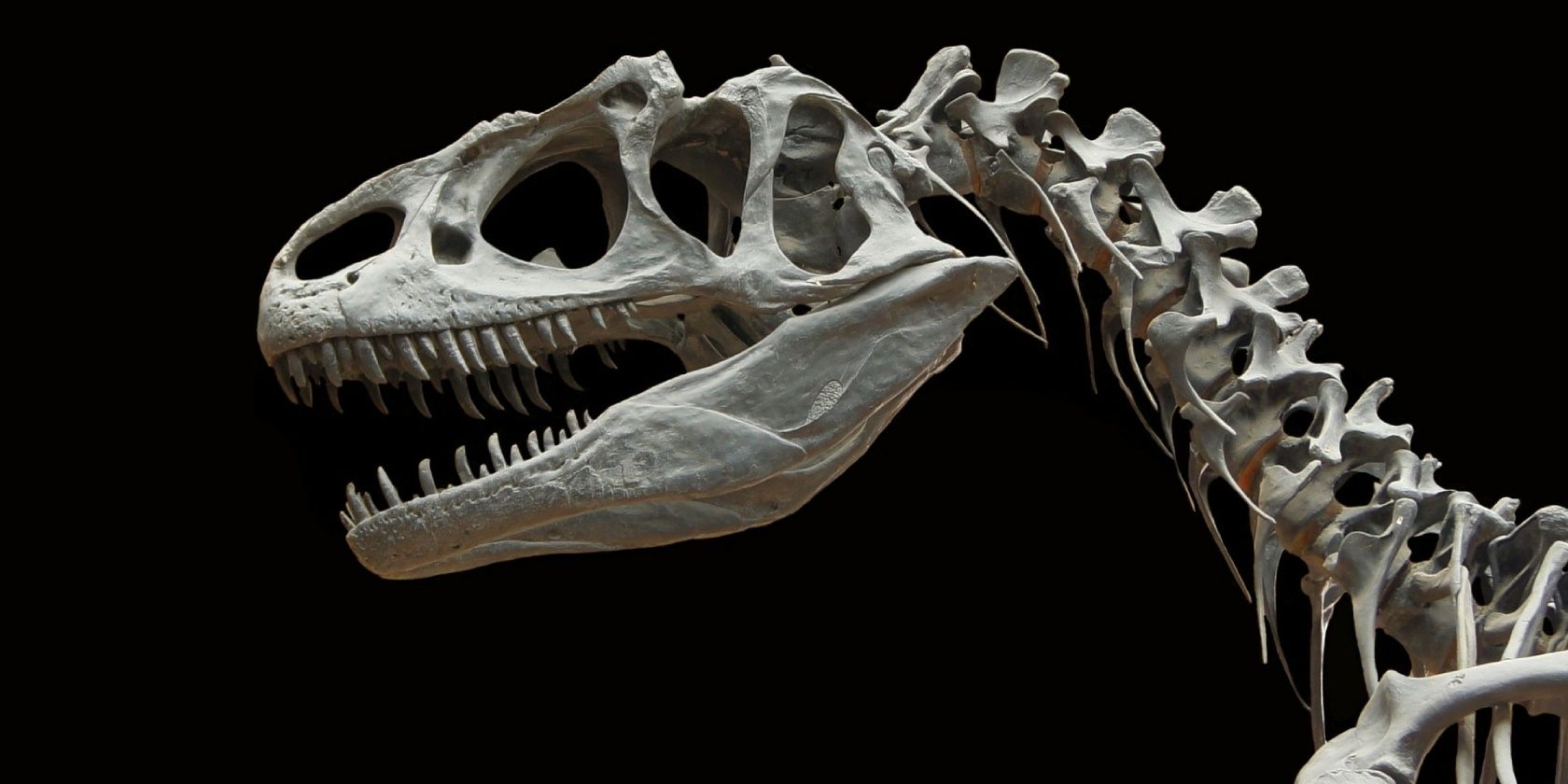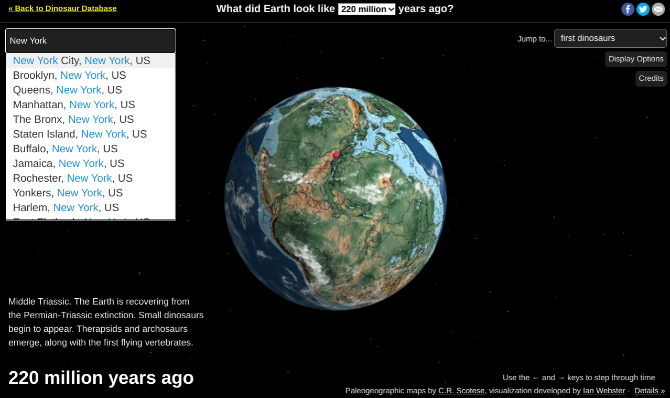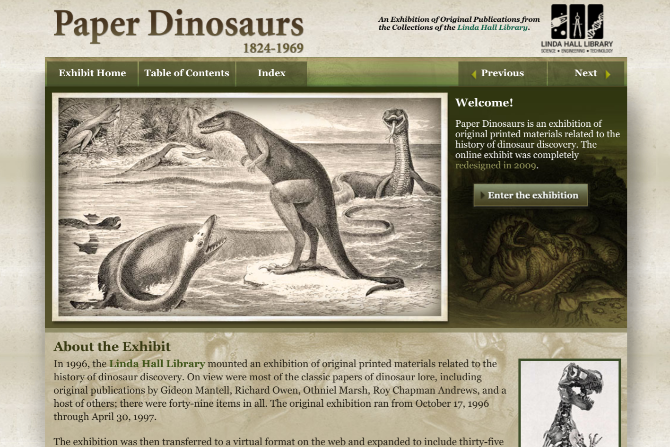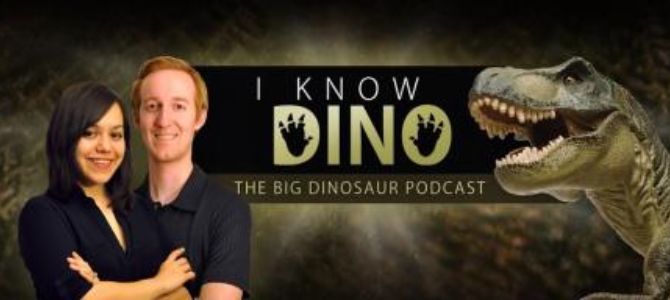Dinosaurs ruled the earth eons before mankind, and we continue to be fascinated by them today. Learn more about these magnificent creatures through these free websites, podcasts, virtual museums, and augmented reality apps.
None of these need you to know much about dinosaurs or paleontology. All these resources are accessible for anyone with a mild interest, and provide a little extra for enthusiasts. If you just enjoyed the Jurassic Park movies and wanted to learn more, these are perfect. And yes, all of them are safe for kids, as well as adults.
1. The Dinosaur Database (Web): Which Dinosaurs Lived in Your City or Country?
The Dinosaur Database is an astonishing visual representation of all types of dinosaurs. It's a collection of pictures, facts, and geographical data that gives you a never-before look at these magnificent prehistoric creatures.
The focus is on regional distribution, with categories like North America, South America, Europe, Africa, Madagascar, Asia, India, Australia, and Antarctica. Pick any to find which dinosaurs lived near your city or country, and learn about how they looked, which age they lived in, and what the earth looked like back then.
The Dinosaur Database's virtual interactive globe of ancient Earth is a masterpiece. Search for your city, and you'll see where it appeared millions of years ago when all landmasses converged into a supercontinent. And you can see how it kept changing as the continents broke up and drifted.
It's a whole new way of looking at dinosaurs, especially when you see two dig sites that found fossils of the same dinosaur. Today, those dig sites might have rivers or oceans between them. But when you see it plotted on this ancient earth globe, you can visualize how it was a small walk for the dinos back then.
2. Paper Dinosaurs (Web): History of Dinosaur Discovery and Illustrations
As astounding as dinosaurs are, the discoveries of these mammoths are as fascinating. The Linda Hall Library created a free online exhibition on the history of dinosaur discovery.
It's a step-by-step exhibit, taking you from the first published paper on dinosaurs in 1824, to one of the most ground-breaking finds in 1969. A total of 49 exhibit items span iconic publications by paleo greats like Gideon Mantell, Richard Owen, Othniel Marsh, Roy Chapman Andrews.
Each discovery is accompanied by a write-up telling you why it was important, as well as illustrations and images. Click any image to see a high-resolution version, digitally enhanced for modern computers and phones.
It's about 90 minutes of captivating insights into how humans have joined the dots to learn more about our predecessors. It'll help you better understand the world of dinos today and the many theories and changes that come up as science evolves and new discoveries are made.
3. I Know Dino (Podcast): Weekly Dinosaur Podcast for Casual Fans and Enthusiasts
Hosts Garret and Sabrina release a new episode of the I Know Dino podcast every Wednesday. Each episode is about 30 minutes, and they talk about dinosaur news, interviews with experts and paleontologists, and a dino of the week. It's the last dinosaur podcast you'll ever need.
I Know Dino's style and tone are eminently accessible for anyone with the slightest interest in dinosaurs. You don't need to know technical terms, and when guests sometimes use them, the hosts take a moment to explain it. Even if you don't read palaeontological news regularly or rush to museums, I Know Dino will satisfy your thirst for knowledge.
Check the "Start Here" page for five recommended episodes for beginners. Personally, I loved the 100th episode and would say it's a great starting point.
4. Augmented Reality Dinosaurs (Web): See the Jurassic World Dinos in 3D Anywhere
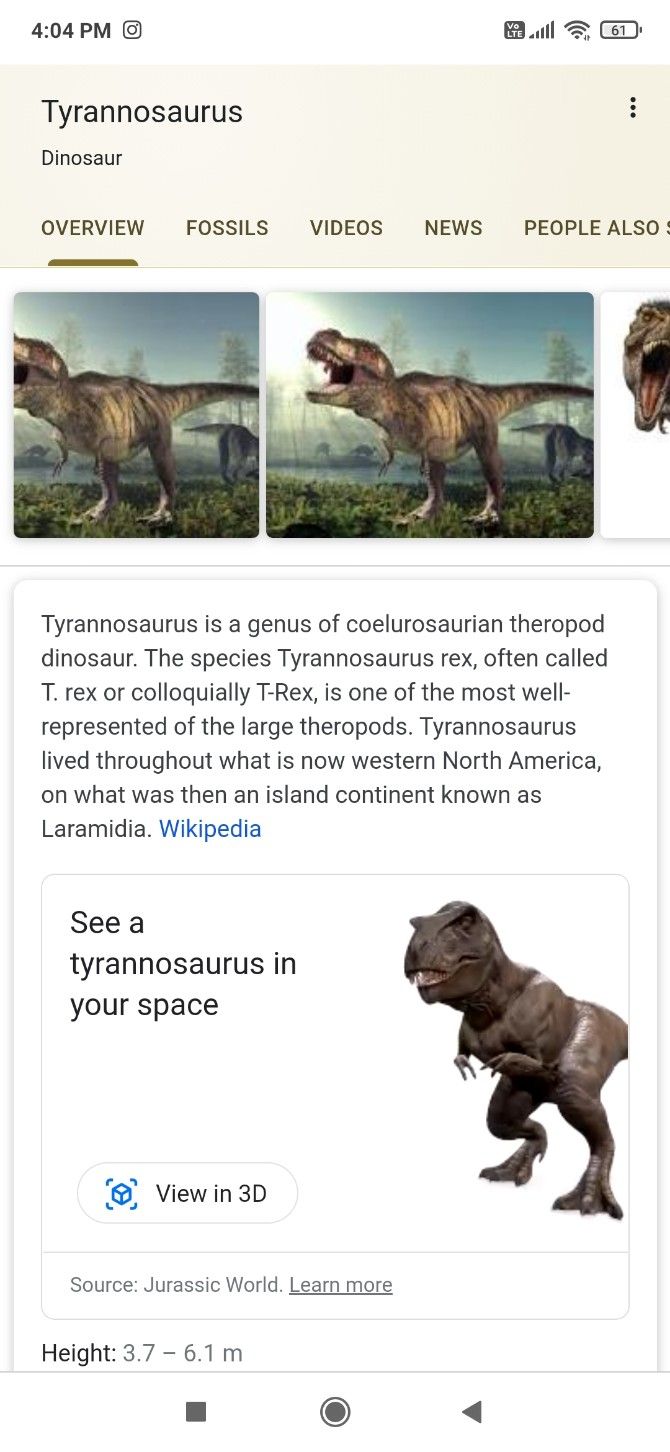
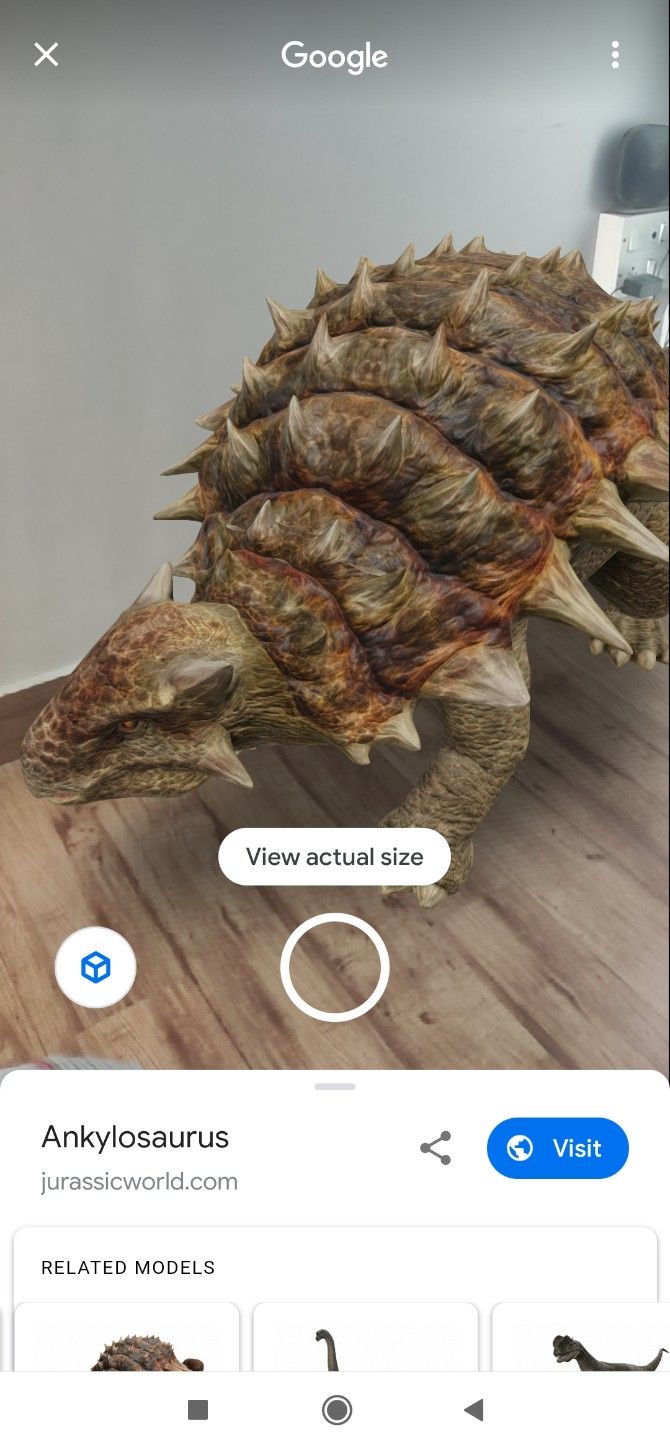
Want to see a T-Rex or a raptor in your backyard? Google partnered with Universal Studios to recreate Jurassic World's dinosaurs in 3D, which can be cast in augmented reality (AR) in any space. It's pretty awesome and surprisingly simple.
Go to Google.com on your phone in Chrome or the Google app. Search for one of the 10 supported dinosaurs: Tyrannosaurus Rex, Velociraptor, Triceratops, Spinosaurus, Stegosaurus, Brachiosaurus, Ankylosaurus, Dilophosaurus, Pteranodon, and Parasaurolophus.
In the knowledge card, you'll see a 3D rendering of the dinosaur with a View in 3D button. Tap that, then tap View In Your Space. Point your phone's camera to any open space, and the 3D rendering will superimpose on it, complete with audio effects.. You can increase or decrease the AR dino size by pinch-zooming. Switch between auto-scale and actual size, for the two viewing options.
The Google blog post has more details about how the AR dinosaurs were created. This feature will only work on ARCore-enabled devices. Check for supported devices here.
5. Dino 101 (Web): Free Online Course on Dinosaur Paleobiology
If you really love dinosaurs and want to understand them better, the University of Alberta, Canada is offering a free online course about them. Dino 101: Dinosaur Paleobiology is a 12-week or 12-lesson MOOC (Massive Open Online Course) available through Coursera.
Dr. Phil Currie and Dr. Angelica Torices take you through different topics about what makes dinosaurs. You might be surprised to find out how similar the anatomy of dinosaurs is to us humans. You'll learn about their eating habits, locomotion, environmental behaviors, and origins, and extinction.
The course offers a slew of cool interactive apps to make learning more fun. Exercises include putting together a skeleton of a Tyrannosaurus and a Parasaurolophus. You'll get to also play with a 3D fossil viewer, which shows different types of recovered fossils like teeth, claws, bones, etc.
The Dino 101 course is free and accessible. You might want to look for a study partner on Cuddy, one of the best study tools for online courses.
Take Virtual Tours of Natural History Museums
Museums are some of the best places to get a feel for the size and scale of dinosaurs. But if you can't go to a museum right now, you can still take a virtual tour. For example, the Melbourne Museum's Dinosaur Walk is a fascinating journey replete with 17 prehistoric skeletons, and a virtual tour on Google Maps. You'll find several other natural history museums offering such virtual peeks at their dinosaur collections.
But the king of them all is the Smithsonian National Museum of Natural History. It's easy to browse, has a helpful floor map to take you along, offers virtual interactions, and even boasts of an AR mode if you have Google Cardboard or similar AR headsets. It's the best virtual museum you can tour without leaving home.

